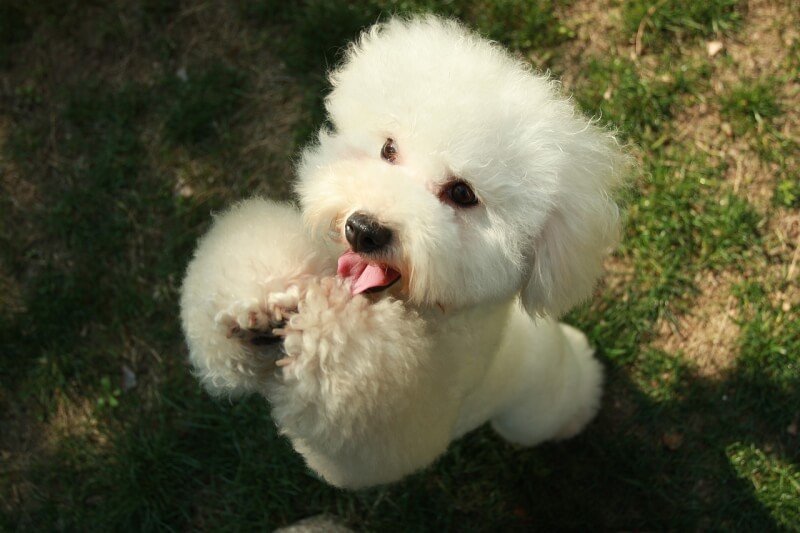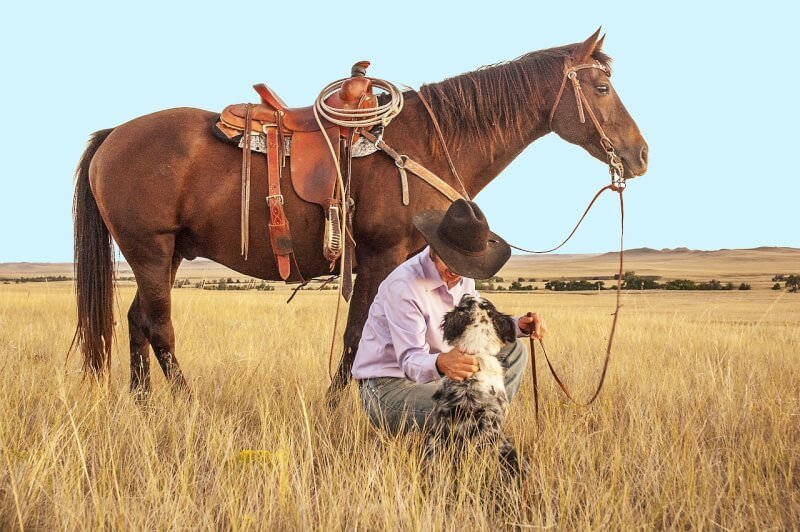Have you ever wondered why your furry companion behaves the way they do? Understanding dog behavior and obedience is not only essential for a happy and well-adjusted pet, but also for building a strong bond between you and your four-legged friend. From tail wagging to barking and everything in between, this article explores the fascinating world of dog behavior, shedding light on the reasons behind their actions and offering valuable insights into fostering positive obedience in your canine companion. So, grab a treat, get cozy, and let’s embark on this journey to uncover the secrets of your dog’s behavior and how you can nurture their obedience.

Understanding Dog Behavior
Welcome to the comprehensive guide on understanding dog behavior! Dogs are fascinating creatures with complex behaviors that are influenced by various factors. By gaining a deeper understanding of why dogs behave the way they do, you can build a stronger bond with your furry friend and effectively address any behavioral challenges that may arise.
Ready for Cat Trivia?
Test your knowledge about cats!

Instinctual Behavior
A significant aspect of a dog’s behavior stems from its instincts. Dogs have retained many traits from their wild ancestors, such as hunting and pack behavior. Instinctual behaviors in dogs include activities like marking territory, digging, chasing, and prey drive. Understanding these innate behaviors can help you provide appropriate outlets for your dog’s natural instincts, preventing boredom and destructive behavior.
Social Behavior
Dogs are social animals, and their behavior is greatly influenced by their interactions with other dogs and humans. Socialization is crucial for puppies and dogs to develop appropriate social behavior. A well-socialized dog is typically more confident, friendly, and less likely to exhibit fearful or aggressive behavior. By exposing your dog to various environments, people, and other dogs, you can lay the foundation for positive social behavior.
Communication Behavior
Dogs have a diverse range of ways to communicate their needs, emotions, and intentions. Understanding their communication cues and body language is essential for effective interaction and to prevent misunderstandings. Dogs use vocalizations such as barking, growling, and whining, as well as body postures, facial expressions, and tail movement to convey their messages. By paying close attention to your dog’s body language, you can better understand their emotions and respond appropriately.
Problem Behavior
Problem behaviors in dogs can be challenging to deal with, but they can often be addressed with patience and proper training techniques. Common problem behaviors include aggression, separation anxiety, excessive barking, chewing, and jumping on people. By examining the underlying causes of these behaviors and implementing appropriate behavior modification techniques, you can help your dog overcome these challenges and live harmoniously with you and others.
Factors Affecting Dog Behavior
While a dog’s behavior is influenced by a combination of genetic and environmental factors, certain key elements play a significant role.
Breed Characteristics
Different breeds have distinct characteristics and predispositions. Some breeds are naturally more active and energetic, while others are more laid-back. It’s important to research and understand the specific breed traits of your dog to provide appropriate mental and physical stimulation, as well as to address any breed-specific behavior challenges.
Upbringing and Socialization
The way a dog is raised and socialized during its formative weeks and months plays a vital role in shaping its behavior. Early exposure to different environments, people, animals, and positive experiences can greatly contribute to a well-adjusted and socially confident dog. Proper socialization and positive reinforcement training from puppyhood can help prevent behavior problems later in life.
Health and Genetics
Health issues and genetics can impact a dog’s behavior. Certain medical conditions and genetic predispositions can result in behavioral changes or abnormalities. It is essential to monitor your dog’s health and seek veterinary care if you notice any sudden or uncharacteristic behavioral changes, as these could indicate an underlying health issue that needs attention.
Environment and Training
The environment in which a dog lives and the training methods used greatly influence its behavior. A stable and structured environment with consistent rules and routines can help foster good behavior. Additionally, positive reinforcement training techniques that focus on rewarding desired behaviors rather than punishing unwanted ones are generally more effective and promote a stronger bond between you and your dog.
Importance of Obedience Training
Obedience training is a crucial aspect of your dog’s overall well-being and can have a profound impact on their behavior and your relationship with them.
Enhancing Communication and Bonding
One of the primary benefits of obedience training is improving communication between you and your dog. Through training, your dog learns to understand and respond to specific commands, making it easier for you to manage their behavior and ensure their safety. Moreover, the training process itself fosters a stronger bond between you and your furry companion, as you both learn to work together as a team.
Promoting Safety and Control
Training your dog in obedience commands provides a greater level of control and safety in various situations. Commands such as “sit,” “stay,” and “come” enable you to keep your dog out of potentially dangerous situations or prevent them from engaging in unwanted behaviors. This control can be particularly important in public areas, around other animals, or during emergencies.
Preventing Behavioral Issues
A well-trained and obedient dog is less likely to exhibit problem behaviors. Obedience training helps establish clear boundaries and expectations, reducing the likelihood of your dog displaying aggressive, destructive, or disruptive behaviors. By teaching your dog to focus on you and follow commands, you can prevent many common behavioral issues from developing.
Promoting Mental Stimulation
Obedience training provides mental stimulation for your dog, which is essential for their overall well-being. Dogs are intelligent animals and thrive when challenged mentally. The training process keeps their minds engaged, preventing boredom and associated destructive behaviors. Regular training sessions provide an outlet for mental energy, which can contribute to a happier and more well-balanced dog.
Common Behavioral Issues
Despite our best efforts, it’s not uncommon for dogs to exhibit certain behavioral issues. Understanding the underlying causes and implementing effective strategies can help address these challenges.
Aggression
Aggression in dogs can manifest in various forms, such as growling, barking, lunging, or biting. This behavior can be triggered by fear, territoriality, anxiety, or inadequate socialization. It is crucial to identify the root cause of aggression and seek professional help to address it safely and effectively.
Separation Anxiety
Separation anxiety is a condition where dogs experience extreme distress when separated from their owners. Symptoms include excessive barking, destructive behavior, and toilet accidents. Gradual desensitization and counterconditioning techniques can help alleviate separation anxiety and promote a sense of security when left alone.
Barking
Barking is a natural form of communication for dogs, but excessive or incessant barking can be problematic. It may result from boredom, fear, territoriality, or a desire for attention. Training methods that focus on redirecting and rewarding desired behaviors, along with identifying and addressing the underlying cause, can help manage excessive barking.
Chewing
Dogs have a natural inclination to chew, especially during their teething phase. However, inappropriate chewing can cause damage to furniture, shoes, and other household items. Providing appropriate chew toys and teaching your dog what is acceptable to chew on can help redirect this behavior.
Jumping on People
Jumping on people is often an enthusiastic greeting behavior exhibited by dogs. While it may seem harmless, it can be problematic, especially when your dog interacts with children or older adults. Consistent training and teaching alternative greeting behaviors, such as sitting or offering a paw, can help prevent this unwanted behavior.

Basic Obedience Commands
Teaching your dog basic obedience commands is fundamental to their training and behavior.
Sit
The “sit” command teaches your dog to sit in a stationary position. This command is useful in various situations, such as when greeting people, waiting for food, or crossing the street. Start by holding a treat close to your dog’s nose, then move your hand upwards, causing their head to follow and their bottom to lower naturally. As their bottom touches the ground, say “sit” and give them the treat as a reward.
Stay
The “stay” command teaches your dog to remain in a specific position until given further instruction. Begin by having your dog sit or lie down, then extend your hand towards them, palm out, and say “stay.” Take a step back, and if your dog remains in place, return to them and offer a reward. Gradually increase the distance and duration of the stay command over time, always rewarding your dog for successful stays.
Come
The “come” command is essential for calling your dog to you, particularly in potentially dangerous situations or during off-leash activities. Begin by kneeling down, opening your arms, and using an excited or inviting voice to say “come!” At the same time, gently pat your legs or use a treat to encourage your dog to approach you. When they reach you, reward them with praise, affection, or a treat.
Lie Down
The “lie down” command instructs your dog to lower their body and lie down on their belly. Begin by having your dog in a sitting position, then hold a treat near their nose and gradually lower your hand to the ground between their front paws. As they follow the treat, say “lie down” and let them taste the treat as a reward. Practice this command in different locations and gradually phase out the treat rewards.
Heel
The “heel” command teaches your dog to walk calmly and closely by your side without pulling on the leash. Start by getting your dog’s attention with a treat and holding it at your left side, a few inches from your thigh. Begin walking, saying “heel,” and reward your dog for staying in the desired position. If they start to pull or get distracted, use a slight leash correction and redirect their focus back to the heel position.
Positive Reinforcement Techniques
Positive reinforcement is a widely recognized and effective training approach that focuses on rewarding desired behaviors to encourage their repetition. Here are some positive reinforcement techniques you can use:
Rewards and Treats
Rewarding your dog with treats, praise, or playtime reinforces their good behavior. Treats should be small, easily chewed, and highly enticing for your dog. Treat rewards should be given immediately after your dog carries out the desired behavior to make a clear association between the action and the reward.
Clicker Training
Clicker training involves using a handheld clicking device that emits a distinct sound when pressed. The sound of the clicker serves as a marker for correct behavior, signaling to your dog that they have performed the desired action. Pairing the clicker sound with treats or rewards helps your dog quickly understand the behavior you want them to repeat.
Marker Training
Similar to clicker training, marker training uses a verbal cue, such as the word “Yes!” or a distinctive sound, to mark the correct behavior. This verbal marker lets your dog know that they have done something right and that a reward will follow. Consistency and timing are crucial in marker training to ensure your dog associates the marker with the correct behavior.
Verbal Praise and Affection
Verbal praise, along with physical affection like petting and gentle massages, can serve as powerful rewards for your dog. High-pitched, happy tones of voice can convey your excitement and satisfaction when your dog exhibits the desired behavior. Kind words and physical affection foster a positive emotional connection between you and your four-legged companion.

Training Tips and Strategies
Consistency and structure are essential when it comes to training your dog. Here are some helpful tips and strategies to maximize the effectiveness of your training sessions:
Consistency and Persistence
Consistency is key in dog training. Use the same commands, reward system, and training techniques throughout the entirety of your training sessions. By maintaining a consistent approach, you help your dog understand what is expected of them and reinforce their learning. Additionally, persistence is important. Dogs learn at different paces, so be patient and continue training regularly to achieve the desired results.
Starting Early
Training should begin as early as possible, ideally during the puppy stage when dogs are most receptive to learning. Puppies have a natural curiosity and desire to please, which can be harnessed through positive reinforcement training. Starting early also prevents the formation of undesirable behaviors and establishes a strong foundation for future training endeavors.
Short and Regular Training Sessions
Dogs have limited attention spans, so it’s important to keep training sessions short and engaging. Regular, brief training sessions spread throughout the day are more effective than long, sporadic sessions. Aim for several 5-10 minute training sessions each day to maintain your dog’s focus and prevent mental fatigue.
Using Clear and Simple Commands
Keep your commands clear, concise, and consistent. Use simple words or phrases that are easy for your dog to understand. Avoid using similar-sounding words for different commands to prevent confusion. Additionally, use hand signals in conjunction with verbal commands to reinforce the desired behaviors visually.
Professional Obedience Training
While many dog owners can successfully train their pets using basic obedience techniques, professional obedience training can be invaluable in certain situations or for specific behavior challenges.
Finding a Certified Trainer
When seeking professional obedience training, it’s crucial to find a certified and experienced dog trainer. Look for trainers who have comprehensive knowledge of different training methods, behavior modification techniques, and a solid understanding of dog psychology. Ask for recommendations from trusted sources or consult local veterinary clinics and training centers.
Training Programs and Methods
Professional obedience training programs often offer a structured curriculum designed to address a range of behavioral issues. Trainers use a variety of methods, such as positive reinforcement, clicker training, or marker training, to tailor the program to your dog’s specific needs. Research and choose a training program that aligns with your training goals and philosophies.
Training Equipment and Tools
Professional trainers may incorporate specialized training equipment and tools, such as head collars, halters, or training harnesses, to aid in managing and correcting behavior. These tools should be used under the guidance of a professional trainer and with an emphasis on positive reinforcement. Ensure that the training methods and equipment used are humane and do not cause harm or distress to your dog.
Cost and Time Commitment
Professional obedience training comes at a cost, so consider your budget and financial capacity when selecting a training program. Additionally, assess the time commitment required, as certain behavior issues may require an extended training period. A proactive approach to training and working closely with the trainer will yield the best results for you and your dog.

Addressing Behavioral Issues
Addressing behavioral issues in dogs requires an understanding of the root cause and implementing appropriate strategies for behavior modification.
Identifying the Root Cause
Identifying the underlying cause of a behavioral issue is crucial to finding an effective solution. Observe your dog’s behavior to determine potential triggers, whether they are fear-based, related to past experiences, or a result of insufficient socialization. By pinpointing the root cause, you can tailor your training and behavior modification techniques to address the specific issue.
Seeking Professional Help
For complex or severe behavioral issues, seeking professional help from a qualified animal behaviorist or certified dog trainer is highly recommended. These professionals have extensive knowledge and experience in dealing with a wide range of behavioral challenges. They can provide guidance, create a customized behavior modification plan, and set realistic goals for you and your dog.
Behavior Modification Techniques
Behavior modification techniques focus on rewarding desired behavior while redirecting or managing unwanted behavior. Techniques such as desensitization, counterconditioning, and positive reinforcement are commonly used. These techniques aim to change the emotional response or association that triggers the problem behavior, ultimately replacing it with a more desirable behavior.
Continued Training and Reinforcement
Consistency and ongoing training are essential in addressing behavioral issues. Even after successfully modifying a behavior, it’s important to continue reinforcing the desired behavior through regular training and positive reinforcement. By consistently practicing the learned behaviors, you can ensure the long-term maintenance of good behavior.
Maintaining Good Behavior
Maintaining good behavior in your dog requires ongoing effort and attention. Here are some tips to help you maintain your dog’s positive behavior:
Regular Exercise and Mental Stimulation
Providing your dog with regular physical exercise and mental stimulation is crucial for their overall well-being. Daily walks, playtime, puzzle toys, and interactive games can help channel their energy in a constructive manner, reducing the likelihood of boredom-driven or restless behavior.
Establishing Routines and Rules
Creating and sticking to a consistent routine helps dogs feel secure and understand what is expected of them. Establish feeding, exercise, and training schedules, and maintain consistent rules and boundaries. Dogs thrive in an environment with clear expectations, which helps them feel calmer and more content.
Positive Reinforcement and Encouragement
Continue using positive reinforcement and verbal praise to acknowledge and reward your dog’s good behavior. Regularly reinforce the behaviors you expect from your dog, and remember to celebrate their successes. Genuine encouragement and praise go a long way in reinforcing positive behavior and strengthening your bond with your furry friend.
Monitoring and Correcting Behavior
Regularly observe your dog’s behavior and address any emerging issues before they become major problems. Correcting inappropriate behavior promptly and consistently with guidance from positive reinforcement trainers can help redirect behavior and prevent the development of new behavioral challenges.
By understanding the factors influencing dog behavior, the importance of obedience training, and how to address common behavioral issues, you are well-equipped to create a harmonious relationship with your furry companion. Implementing positive reinforcement techniques, seeking professional help when needed, and maintaining good behavior will contribute to a happy and well-behaved dog that enriches your life and brings you joy. Remember, building a strong bond with your dog involves patience, understanding, and a commitment to their well-being. Enjoy the journey of training, bonding, and exploring the incredible world of dog behavior!



